Circulating Th1-Cell-type Tfh Cells that Exhibit Impaired B Cell Help Are Preferentially Activated during Acute Malaria in Children
- PMID: 26440897
- PMCID: PMC4607674
- DOI: 10.1016/j.celrep.2015.09.004
Circulating Th1-Cell-type Tfh Cells that Exhibit Impaired B Cell Help Are Preferentially Activated during Acute Malaria in Children
Abstract
Malaria-specific antibody responses are short lived in children, leaving them susceptible to repeated bouts of febrile malaria. The cellular and molecular mechanisms underlying this apparent immune deficiency are poorly understood. Recently, T follicular helper (Tfh) cells have been shown to play a critical role in generating long-lived antibody responses. We show that Malian children have resting PD-1(+)CXCR5(+)CD4(+) Tfh cells in circulation that resemble germinal center Tfh cells phenotypically and functionally. Within this population, PD-1(+)CXCR5(+)CXCR3(-) Tfh cells are superior to Th1-polarized PD-1(+)CXCR5(+)CXCR3(+) Tfh cells in helping B cells. Longitudinally, we observed that malaria drives Th1 cytokine responses, and accordingly, the less-functional Th1-polarized Tfh subset was preferentially activated and its activation did not correlate with antibody responses. These data provide insights into the Tfh cell biology underlying suboptimal antibody responses to malaria in children and suggest that vaccine strategies that promote CXCR3(-) Tfh cell responses may improve malaria vaccine efficacy.
Copyright © 2015 The Authors. Published by Elsevier Inc. All rights reserved.
Conflict of interest statement
The terms of this arrangement have been reviewed and approved by the University of California in accordance with its conflict of interest policies. No other author declares a conflict of interest.
Figures
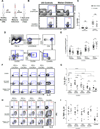


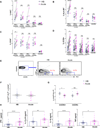
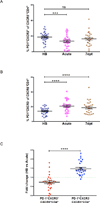
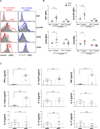
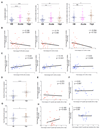
References
-
- Akiba H, Takeda K, Kojima Y, Usui Y, Harada N, Yamazaki T, Ma J, Tezuka K, Yagita H, Okumura K. The role of ICOS in the CXCR5+ follicular B helper T cell maintenance in vivo. Journal of immunology. 2005;175:2340–2348. - PubMed
-
- Alonso PL, Sacarlal J, Aponte JJ, Leach A, Macete E, Aide P, Sigauque B, Milman J, Mandomando I, Bassat Q, et al. Duration of protection with RTS,S/AS02A malaria vaccine in prevention of Plasmodium falciparum disease in Mozambican children: single-blind extended follow-up of a randomised controlled trial. Lancet. 2005;366:2012–2018. - PubMed
-
- Amanna IJ, Carlson NE, Slifka MK. Duration of humoral immunity to common viral and vaccine antigens. N Engl J Med. 2007;357:1903–1915. - PubMed
Publication types
MeSH terms
Substances
Supplementary concepts
Grants and funding
LinkOut - more resources
Full Text Sources
Other Literature Sources
Medical
Molecular Biology Databases
Research Materials

